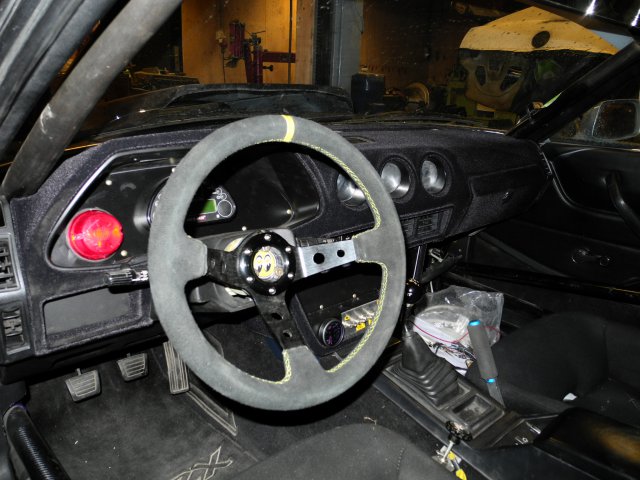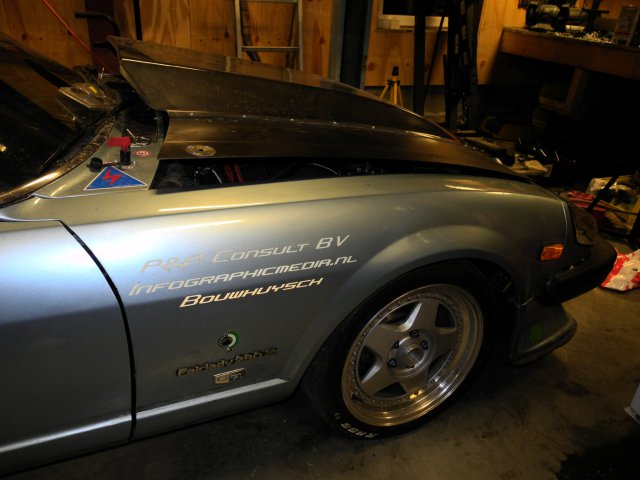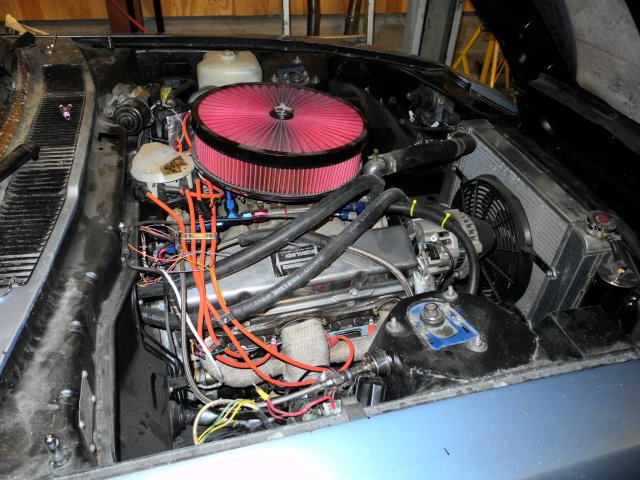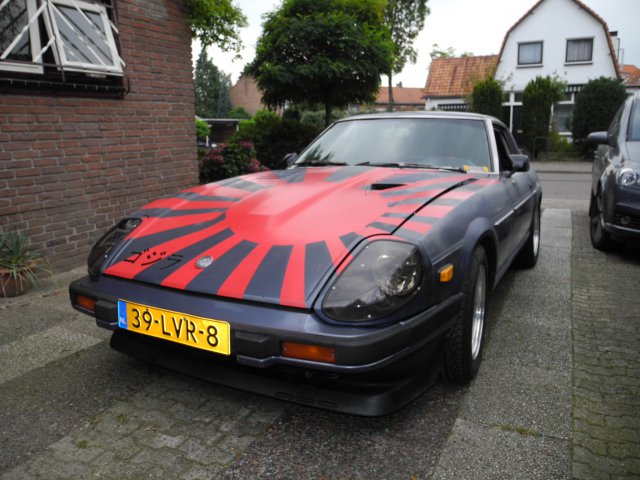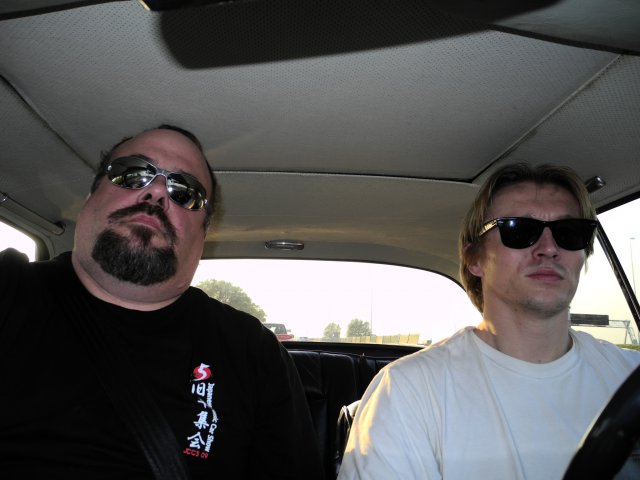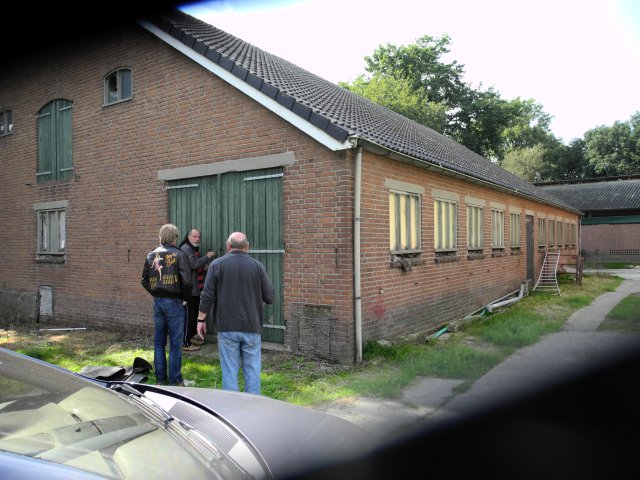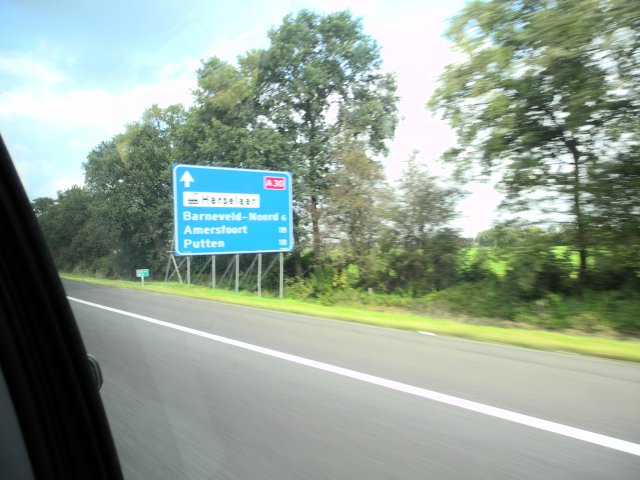-
Posts
9963 -
Joined
-
Last visited
-
Days Won
74
Content Type
Profiles
Forums
Blogs
Events
Gallery
Downloads
Store
Everything posted by Tony D
-

What's a fair price for this guy's patch panels?
Tony D replied to TieFighter88's topic in Non Tech Board
Just a little reality for people here: Whole Car's Shell for $300 (Fair Enough Price)---guy gets $300, and his driveway is clear, done, not a second more spent worried that there will be a code enforcement ticket, upset neighbor, DONE! He goes inside to have a beer. Roof and Rockers for $400 (Fair Enough Price)--guy gets $400, for cutting up the parts, but still has a driveway full of a hulk of a car which is now incomplete. Spend the rest of the day in the hot sun cutting the REST of the car into little dumpster sized bits, then driving around behind shopping centers disposing of them out of the trunk of his car. Spends $40 in gas to dispose of the parts. Net money now $360, but he's lost a day of his life to accommodate your request for pieces instead of the whole thing. This is the SAME THING as a half cut from Japan. Sometimes the WHOLE CAR shows up instead. The price they get them for doesn't justify the labor used to chop them in half and then deal with what remains! Another way to read this: He really doesn't want to cut the damn thing up for the scenario in #2 above...but is willing to do it. He would RATHER the WHOLE THING just go away. I have to be honest: If I had a roof just LAYING AROUND it would be cheap. If someone wanted me to CUT OFF A ROOF (and thereby invoke the second scenario above) I would be hard pressed to accept almost ANY offer as I just don't want to spend a day cutting up a car. You want the WHOLE thing, come take it. You want to piece it apart...come take the WHOLE thing and YOU "Sell the rest for a profit" if you think you can. -

What's a fair price for this guy's patch panels?
Tony D replied to TieFighter88's topic in Non Tech Board
1) Yes it does. 2) Then buy them instead. -
As Leon mentioned, the Tau Layer is fuel coating the walls of the runners. The KEY to proper mixture control is to keep the Tau Layer CONSISTENT. The problem that confounds ALL high-end EFI tuners is the transitionals to keep the Tau constant. For carbs....well... "Just go rich, and you will be safe"... I got 17MPG on my 350HP Blow-Through Mikuni L28 for YEARS. (Decades, actually...) Better than the SU's that were on it formerly, tell the truth. With EFI, my drivability problems went away, my transitional driving smoothed out immeasurably, and my mileage went up to high 20's. Cruise on the freeway went from 17 to 29-31mpg. On track mileage was identical: 4-5mpg if I'm lucky. And with all that being said...I revert to the original statement, REGARDLESS of your setup: You can have the best components in the world. It doesn't mean that ONE thing failing ONCE won't turn it all into a pile of scrap instantly. And you may never HEAR anything. The detonation you hear is 'safe'---you pull your foot. What about the thousands of miles you drove without ever hearing it?
-
Why do the big boys in NHRA run Vacuum Pumps on the Crank Case? Find the answer, and you will answer your own question about the PCV. It's not just an emissions component. They're cheap, and the Nissan Valve is more than just a check valve. It is a flow-control device. It throttles the amount of evacuation given dependent on load and engine speed. The OEM design has at a minimum 4" W.C. evacuation pressure on the crankcase AT ALL TIMES if not slightly more (midrange)...
-
BTW, with the cast iron manifold, and 2.5" exhaust and two mufflers on board I Dyno Jetted to 147, run the 1/4 mile in 15.30-15.50, and was quiet as can be. My consistent time in the 1/4 was 15.45~15.55. After adding the header to the existing package, I ran consistent 15.40~15.50. So I don't see the expense and noise as an acceptable tradeoff. I was within a 0.1 range before, and the header didn't lower me even a full 0.1 second. I'm not a drag racer, but I was consistent. Car was 75 2+2 weight of 2695 with my 255# in it. My 260Z Coupe all stock similarly equipped (no weight) runs about 1-1.5 seconds slower, and my Dyno Jet on that one showed close to 30HP less---around 120.
-
Absolutely not. Zoomies out the fender...probably. Extractor and exhaust pipe with some sort of muffler...pffft! Not an issue. May not be doing yourself any favors, but not harming anything. My experience on a stock engine was that changing the exhaust from the cast manifold back reaped great rewards. Changing several years later to the 'matched extractor' (header) for the exhaust I originally installed netted me considerably more noise, but nothing practical to speak of in terms of real-world horsepower. The biggest change was effected from reducing or eliminating backpressure AFTER the collector (wherever that may be), and not from the point of the head-manifold gasket surface to the collector (whether that be near the head as in the case of the stock 75 Cast Iron Manifold, or down by the Transmission / Engine Joint in the case of the Extractor.) Frankly, the biggest thing I got from the extractor was an exponential increase in noise outside and inside the vehicle. If I had a suitable stock manifold to put in there, I'd swap back in a second and not cry about it at all. The 'performance' achieved was not worth the penalty incurred IMO. Exhaust, yes. Extractor, no. And this, I believe, was Mike's Point to begin with.
-

Finetuning 260z roundtop carbs.
Tony D replied to Laurel1800's topic in S30 Series - 240z, 260z, 280z
Past the McDonalds, on the right, surrounded by sheep. Out in the Barn, preserved...or used... are things... Now, you Dutch and your Bike Fetish, but back to the barn. There are things. Unnatural Things... Natural Things... Fetching Things that say "Come Hither!" But then play Hard-To-Get! The Barn Exists there, trust these two, they wouldn't lie! I shall return, likely in late September for a trip to the barn, and places nearby... For there is more than one... You must watch the signs on the roadside, the barns are everywhere! You just need to find the right person to reveal them! King Frank, in his "receiving guests regalia" before a foray to 'Das Barn' -
I wonder if he clicked on the link to see the parts in a Nissan Box? (Hint, Hint...)
-

Finetuning 260z roundtop carbs.
Tony D replied to Laurel1800's topic in S30 Series - 240z, 260z, 280z
It's this place outside of Amsterdam...surrounded by sheep that look at you 'come hither' and it's filled with Z's... -
Man, absolutely the wrong time for this car to come up for sale! The time this would save me (in addition to keeping my two LD's as spares then...) is immense!
-
"The shop that did the .5mm over bore and piston upgrade SAID they used forged pistons, now I know they didnt." I'll echo that, how do you know KNOW? Weisco is pretty plain to see. Forged pistons DO break, and the #1 reason for land breakage in turbo cars is detonation. Forged may not be needed for turbo, but it is if you want it to live beyond 7500rpms. I'm suspicious of this whole post seeing things like 'ran for a few years till I had this problem' statement. Sounds to me like someone is upset their engine broke and just hasn't grasped that you can use the best parts on the face of the planet and if one thing, one time, doesn't work....it won't save ANYTHING from going "Boom!"
-

Finetuning 260z roundtop carbs.
Tony D replied to Laurel1800's topic in S30 Series - 240z, 260z, 280z
All I needed was a photo to see what it was. 73 240Z & all 260Z 46mm carbs have a choke plate in them with a squarish intake end. If they are round, and flat top, they are 38's! Go to Frank's Barn outside Amsterdam if you want to see 46mm Flat Tops from the Dutch Market (if you get there after I do, they may not be there any longer!) -
Just for the record... I just ran across this---to which I NEVER received an answer! My link Good things come to those who wait I guess... But 7 years?
-
Omega instruments makes a low-voltage non-contact temperature sensor. I want to say 5-24V... Most guys put temp-a-stick crayon on the rotors and the calipers to know at a glance where maximums were during a run. Kind of after-the-fact, but max temp is where you start at when choosing compounds and especially fluids!
-
"I don't know, the guy in the other old Datsun went right through there, I had the perfect line, then it just went away!"
-

CHTS or water temp sensor?
Tony D replied to rickyellow zee's topic in Trouble Shooting / General Engine
yes, CHTS/Water Thermosat Temperature is the largest raw correction to fueling you have! Unplug it, and you should flood the engine out! -
As I mentioned initially it appears something way peening the aluminium on the inlet contour to the inducer section of the impeller. Like something was bouncing around in-and-out, causing the damage.
-
I can tell you it was a 'rub' from something that protruded into the turbine inlet and then was removed. I don't see any evidence of passing through the splitter vanes on the wheel, which if something went THROUGH the inlet, it would go and hit those vanes or otherwise scar the surface finish on the wheel where it passed. I don't have a good side view, but it is possible the wheel was rotating in reverse when it happened... backspin damage, it's hard to tell but the direction of the 'pulled metal' generally looks to coincide with direction of normal rotation so something was sucked into the inlet, but couldn't get through....
-
"I think Mike meant that the engine is not "self-tuning" nor the fuel maps readily adjustable and thus the engine cannot be altered much before fueling problems show up, he just phrased it poorly. " I think that was quite clearly phrased, and said EXACTLY correctly. "In the context mentioned, he was correct"... You fixated on 'backpressure' and jumped on the internet search engine to parrot something you didn't actually research, answering a suggestion which never was really offered as a solution. You missed Mike's point completely. Is that a bit more directly aggressive for your tastes? Like I said, I would hope someone here would take a bit more and actually READ what someone posted, and let the meaning, and point sink in before mindlessly posting a link. And as Leon pointed out, the exhaust is tuned more to a harmonic resonance point speaking in those terms. His contention that the header will likely give him nothing, but after the collector a free flowing exhaust may likely help I agree with. The front end is very touchy about tuning, after that, lower is pretty much better in terms of restriction. Most oversimplify that as 'eliminate all backpressure' which is a terrible way to phrase it. If you want to post a link, post a relevant one at least!
-

Finetuning 260z roundtop carbs.
Tony D replied to Laurel1800's topic in S30 Series - 240z, 260z, 280z
38mm Late Model Hitachi SU's and "they" are wrong. The Hitachi licensed SU Flat-Tops HAVE needles same as all of them. And they adjust JUST like the earlier round-tops. They are not like SU HIF6's that they were patterned after in the 46mm version. They ARE NOT '260Z Flat Tops'---there is gross ignorance about non-us specification (and quite a bit of ignorance about us-specification) equipment on these items. These are late model SSS Carbs. Virtually identical to the early carbs with the difference being the ability to idle on a separate dedicated circuit, allowing for a 'fatter' (richer) main needle cut. Chances are if you are adjusting them like a set of Round Tops, you have them all wrong. Follow the guidelines in the 260Z manual for setting up the idle circuit using the external screws, and set the main and transition on the jet position under the carbs (like you would with a real HIF-6, but without the easy screwdriver adjustment of the needle / jet relationship) similar to the earlier 240Z/1600SSS Carbies. This is a piece of cake, but you can't listen to idiots who don't know what you have and give you bad advice. I had a set of these on my 2L Fairlady Z for years. When I sold the car, I kept them, and transferred them to an L20B (instead of using early 1600SSS Round Tops, or later 1800SSS Flat Tops)---ran great! Looked identical to the 1800SSS carbs, so other than the double bolt up front on the timing cover...nobody was the wiser watching my Estate Car pull away! Ratsun I was hoping would be more enlightened. The 510 Forums have extensive stuff on setting up the SSS Carbs, including some good diagrams to figure out the vacuum hoses for the later carb setup. But the ignorance regarding the 'Flat Tops' persists, even though the carbs are functionally identical to the earlier units, save for a separation of idle circuits so you don't have to run pig rich at idle (or lean at idle) and vice-versa on the powerband. This single modification made the SU carburettor suitable for use WELL into the 1980's and was used by Honda that late (even in the US and California Emissions Markets!) Luddites, what can you do with them? (Answer: Stuff them in a Big Straw Man and light it on fire...) Cheers! -
Please explain from an Engineering Standpoint how the rail is 'over complicated'? I can explain to you why the large diameter SINGLE FEED rail needs such large volume though! The stock rail works in a simple loop to feed the injectors from TWO ENDS with pressure regulation in the middle, meaning only three injectors are pulsing on a branch fed by the line. Now, if these whiz-bang aftermarket rails had a center-return regulator and dual feed arrangement, maybe it would be an improvement over stock... But for a stock engine it's a retrograde step in terms of injector feed... Pressure fluctuations in the system are much bigger. Get a good piezio pressure sensor and hook it to an o-scope and run it on a dyno on a STOCK car in both configurations and I think you will understand what I'm saying, and why I'm saying it! Sometimes the engineers that designed the thing actually did know what they were doing!
-
The question is did they mean 'balanced to 3200' or 'balanced at 3200'? Many times balancing is done at a surrogate speed, with settings on the machine far lower than actual speed. For turbine wheels that run on 24,000 rpms, the speed we use is in the 1,800~2,400 rpms. The Aluminum one we had done was balanced for use to 10,000 rpms--what actual speed was I don't know (I would assume around 900~1200 rpms with similar load cel setup) -- we haven't had a problem. 3200 seems like a very low number, generally you balance for terminal speed. A 4 speed car (or a 5 speed run in 4th) will easily hit anywhere between 5500~6500 in stock form. A modified driveshaft IMO should be balanced for the redline of the engine, as in 4th chances are good you WILL see that driveshaft speed. Good balance at high speed will reap benefits at lower speeds. Not saying this is the issue, but in general just asking if everybody is balancing for that low speed? Now if they spun it to 3200 and balanced well...then it's better specification than ours! In which case you're golden!
-

Datsun Nismo comp cam. Stamped with Letter "C"
Tony D replied to Perfect240z's topic in Nissan L6 Forum
Frankly, nowadays, I'll buy the head just to get the cam, same as Mack says. "I get Jobber Price at Isky" Which means, if I provide the JAPAN CORE, my price out the door is not much higher than the junkyard prices here, and CHEAPER than what the guy wants for the "C" cam! This is what you get when you buy a buttload of cams over the years and don't quibble over the prices for the first 10 or 15 years... -
"Yes its a custom billet with honda 45mm pin" Mere pfennigs, guv'nor. Mere pfennigs! Help a poor soul out with a donation, sir. Pleeeeeeeeeeeeease!
-

Finetuning 260z roundtop carbs.
Tony D replied to Laurel1800's topic in S30 Series - 240z, 260z, 280z
If you have "Roundtops from a 260Z" then they are NOT and NEVER WERE on an SSS1800 engine. As stated above, they MAY be 38mm and not the 46mm as on 260's and 240's. In fact, NO 260Z anywhere came with "round tops"---in Holland they also came with the "Flat Tops" and the air bypasses were sealed. Figure out what EXACTLY you have, and THEN start figuring out what to do. I'd verify bore size FIRSTLY. If they are 38mm and not 46, then they are "SSS" SU Carburettors, and then any 510 Forum or SSS Bluebird Forum (Ratsun.net for example) will have LOADS of engine-specific information on them. They were not universal between the 4 and 6 cylinder applications. They were different!

